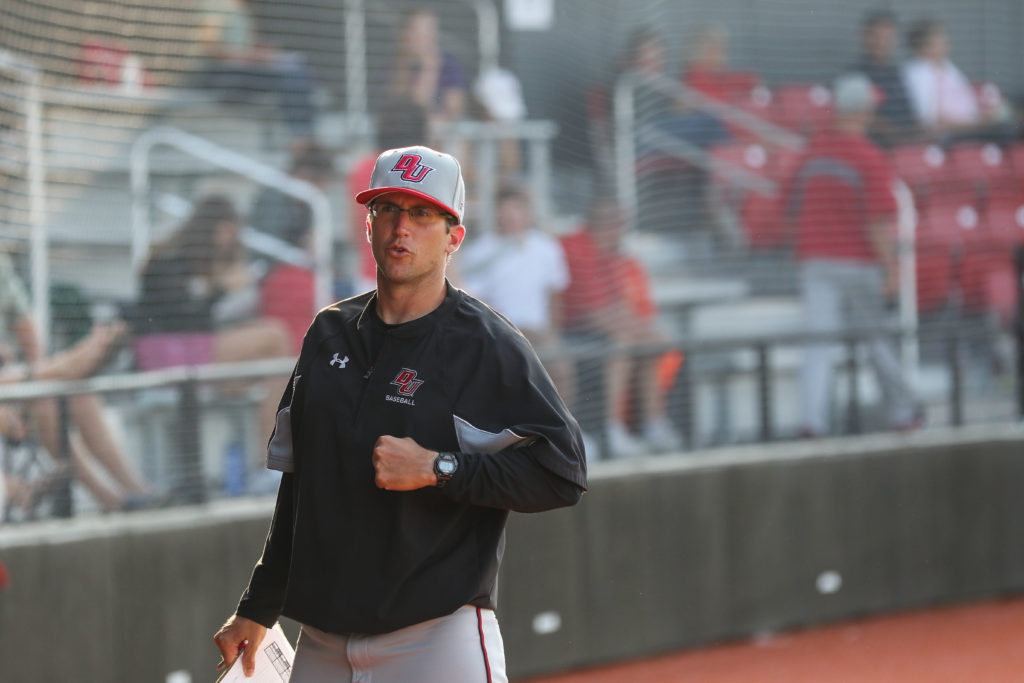
Commonly referred to as “the battery,” pitchers and catchers have what I consider to be the most important relationship within the game of baseball. When I recall my playing days and the catchers I had, my favorites were the ones who gave me confidence on the mound. It takes a unique personality to be able to connect with so many teammates on multiple levels, learn their craft, and compete with them on daily basis.
Here are 4 “TIPS” for developing healthy pitcher/catcher relationships:
#1 TRUST
All solid relationships are built on trust, which is why this is the pillar of TIPS. In order for a pitcher to feel confident, he needs to be able to trust his catcher. Catchers need to give quality feedback in bullpens in regards to velocity, movement, pitchability, etc. This comes with time and learning one another. I like to think of it as a dating relationship, you never know everything after the first date, but after the ninth or tenth one, you have a better idea of who is on the other end! Treat each bullpen and outing like a date.
#2 INVEST
Get to know one another. Figure out what makes each other tick and compete at a higher level. The more you invest in a relationship, the more trust that is built. Better friendships lead to better batteries because it makes you love what you do on the field that much more. This can permeate into the rest of the clubhouse and create a winning culture because the guys truly care about one another.
#3 PACE
Catchers need to understand that each pitcher has a different pace that they are comfortable working at. It is their job to keep them on their pace, but also have some tough love when a pitcher is working too slowly. I have yet to see a pitcher who works quickly that lacks confidence in his pitches. It is a toss-up when pitchers work slowly if they have confidence or not. Pace is what carries a team’s defense and keeps defenders locked in on each pitch.
#4 STRENGTHS
When pitch calling, it is imperative default to the pitcher’s best pitch in key situations. Regardless of what the scouting report says, a pitcher should never lose a game on their worst pitch. For example, it’s the eighth inning, tying run at second, go ahead run at first, and the three-hole hitter at the plate who is susceptible to changeups from right-handers. The pitcher on the hill has a swing and miss slider and an average changeup that depends on the day if it is good or not. I’ll take my chance with a swing and miss slider from the right-hander because that pitch will be thrown with confidence and has a high success rate. Pitchers will try to be who they aren't on the hill and at times, catchers need to give them reality checks to be who they are and what makes them good.
These four TIPS can recharge and energize a pitching staff. Find a quality catcher who will carry these things out and your job as a coach becomes much easier.
Josh Rebandt Bio
2016-Present: Davenport University (MI, NAIA), Pitching Coach
2016: Lakeshore Chinooks (Northwoods League), Pitching Coach, staff finished with league-best regular season Team ERA (3.31), second in strikeouts
2014-2016: Olivet Nazarene University (IL, NAIA), Pitching Coach/Recruiting Coordinator, 2016 CCAC Conference Champions, 2016 staff finished 10th in the NAIA for lowest-team ERA
2013-2015: Niagara Power (New York Collegiate Baseball League), Head Coach, 2015 Three Pitchers named to NYCBL AllStar Game, 2015 league second-best lowest team ERA
2012: Pitching Coach, Niagara Power (New York Collegiate Baseball League)
2012-2014: Clearwater Christian College (FL, NCCAA), Head Coach